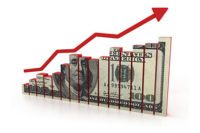2014 Economic Outlook: The sun also rises?
After years of fighting an uphill battle, the protein industry soldiers on and may be looking forward to low feed costs, increased demand and more exports in 2014.














The trouble with making predictions for an agriculture-based industry is that uncontrollable factors have a funny way of intruding.
But all things considered — barring another drought or new disease outbreak, of course — “2014 could be one of the best years for the livestock industry in a decade,” says D. Scott Brown, Ph.D., livestock economist, for Columbia, Mo.-based University of Missouri.
This “could be” outlook stands as “good” news for an industry that has soldiered on, made tough decisions and continued to receive beatdown after beatdown from Mother Nature, the government and economic forces over the past few years. Finally, it appears the dark night may be over — yet although the sun rises every day, the industry has learned to view forecasts with caution.
Overall, 2013 was a mixed bag for many in the beef, poultry and pork industries. High feed costs continued to plague the industry in the first half of the year, but good weather and growing crops helped reduce feed prices for the second half of the year. And the industry is seeing positive results from its efforts to protect itself: increasing efficiencies, exports, diversification and restructuring.
Domestic demand steady, just shifting
For the beef industry, domestic demand is moving in the right direction with better demand and consumption as well, but it is tenuous, says Brown. Consumers shifted to poultry from beef, says Kenneth Perkins, equity analyst with Chicago-based Morningstar Inc., which has been a challenge for some companies.
“There is still probably some restructuring left for beef companies, but it has slowed since grain costs improved,” Perkins adds.
Also this month: |
Grocery shoppers are still buying protein products, just less expensive ones such as poultry and pork (and even different cuts within those categories such as roasts versus steaks). This shift in consumption has been taking place since 2009, and doesn’t show signs of reversing course just yet, says Parks.
Brown says there is a little concern about the latest (at presstime) Restaurant Performance Indicator (RPI) data, which suggests consumers are eating out less, but overall, “We’ve seen some general economic recovery, albeit a slow and anemic one.”
Other factors hurting consumer confidence, which impact food purchases, are the slowly falling unemployment rate, stagnant wage growth and rising home prices while consumers can only afford to rent, says Andrew Duguay, senior economist, Institute for Trend Research (ITR) Economics, based in Boscawen, N.H.
Forward looking indicators, including restaurant and retail sales, show that consumers tend to first cut back on non-essential things — eating out, new furniture and beverages like bottled water or lattes, for example — when they are watching their budgets.
“Consumers are beginning to feel more pinched, and are spending their savings this year,” says Duguay. “So next year we might see them make tougher choices with their wallets.”
In Oklahoma State’s latest Food Demand Survey on consumer behavior, researchers found consumer willingness to pay more for proteins was down 1 to 2 percent.
“The government shutdown caused uncertainty, and consumers saw stories on Salmonella recalls — for example, with Foster Farms in October—which caused hesitation,” says Jayson Lusk, Ph.D., Regents Professor and Willard Sparks Endowed Chair in the Department of Agricultural Economics at Oklahoma State University, Stillwater, Okla.
Exports growing, but tenuous
Exports have, accordingly, been one of the bright spots for the beef industry, and are becoming more important to all proteins, in fact, says Brown.
“There has been a lot of growth across the board,” he says. “Japan, for example, has strong exports [from the U.S.] — in August, [it was] up more than 6 percent from a year ago,” and he points to South Korea and China as other important export customers.
Beef in particular has benefited from finding a new strong source of demand, says Ben Parks, commodity risk manager, Meats and Livestock Group, INTL FCStone, Kansas City, Mo., with about 10 percent of beef being exported, 15 percent of poultry and 20 percent pork.
But with increased demand comes increased exposure to foreign politics (over issues like beta-agonists like Zilmax), currency risks, global economies and demand threats, he says.
“God forbid we have a disease outbreak, because in 2003, when [Bovine spongiform encephalopathy] hit American cattle, the international demand went from a record high to zero overnight,” says Parks. “So you never know when your exports will be shut off.”
Broader uncertainty over regulations
Currently, Canada and Mexico are some of the countries unhappy with upcoming country-of-origin labeling (COOL) regulations, notes Parks, because they assume U.S. packers will bid less (or not at all) for their country’s meat.
Canada and Mexico say COOL will have a trade-distorting impact to World Trade Organization (WTO) trade commitments the U.S. has made. Moreover those nations are threatening retaliation against U.S. exports. Tyson Foods, for one, has said it won’t buy Canadian animals because of their consequent labeling costs.
“Major packers and meat processing organizations are against the new labels and segregating proteins based on where they are born and raised due to increased costs,” says Parks.
Increased U.S. regulations, in general, have certainly affected all proteins by adding costs, providing few benefits to the industry and increasing broader uncertainty over the long-term likelihood of the regulations withstanding appeals, says Glynn Tonsor, associate professor, Kansas State University, Manhattan, Kan.
“Food-safety protocols have a fair amount of discretion on whether they should be tighter,” he says. “But the general direction — more regulations, not less — is pretty clear, just not the speed and magnitude of them.”
The current regulatory atmosphere, combined with the power of social media to quickly mobilize users to boycott products, has caused companies to exercise more caution and anticipate consumer responses. For example, this August, Tyson Foods decided to stop buying cattle that had been given the feed additive Zilmax after observing cattle being delivered for slaughter that appeared lame and non-ambulatory. The beta-agonist can add 24 to 33 pounds to fed steers and heifers in their last 20 days of feeding.
“Surveys that we conducted showed that most consumers had never heard of Zilmax,” says Lusk. “Tyson wasn’t responding to consumer concerns but anticipating concerns. And our data shows that cattle weights are going down since Zilmax has been removed — which is another factor contributing to increased prices.”
Regardless of the popularity and viral nature of some news stories that reach the public mainstream, consumers still claim food safety, price and nutrition are most important, he says.
“One of the things that came across in our data is that recalls are important to them, although they don’t always change their behavior,” says Lusk. Food recalls are but one of many risks the livestock industry faces, says Brown, along with the increased use of technologies not familiar to the typical consumer (such as beta-agonists), weather changes and disease outbreaks that will change international demand and cause lower prices domestically.
“2014 will be a good year, but the industry faces more risk today,” says Brown. “If we have a drought this year like 2012’s, then their future changes a lot.”
Beef finally catching up
Some good news is certainly appreciated after a tough few years for the beef industry. The effects of 2012’s drought reverberated into 2013 with higher prices due to decreased production of grains, corn and soybeans, reaching as high as $7 per bushel for corn before falling to $4.50, which is near 2010 levels, says D. Scott Brown, Ph.D., livestock economist, for University of Missouri.
Andrew Duguay, senior economist, Institute for Trend Research (ITR) Economics, says nothing will change the de-inflationary trend on feed prices, which led to higher costs to produce beef in the past.
“Also, we won’t be seeing any political pushes for ethanol any time soon — as natural gas has taken over the reins from ethanol for energy,” he adds. “So there won’t be artificially boosted prices from corn being diverted away from agriculture.”
Although grain prices have decreased, beef pricing has stayed the same, so the industry is set to finally make some profits in 2014, notes Kenneth Perkins, equity analyst with Chicago-based Morningstar Inc.
This fall, Brown told farmers at a University of Missouri field day that there are positive indications that fed cattle prices can top $1.30 a pound in 2014, compared to less than 80 cents a pound in 2010.
Current future feeder calf prices for 2014 run $50 higher per hundred than in 2010, he added.
All this stands in stark contrast to the way 2013 had started — with the news that Cargill was closing its Plainview, Texas, beef-packing plant — one of its larger plants (2,000 employees) — which handled about 4 percent of the U.S. beef-packing plants’ steer/heifer slaughter capacity — about 4,650 cattle a day. Cargill’s press release on the plant closing noted, “The U.S. cattle herd is at its lowest level since 1952. Increased feed costs resulting from the prolonged drought, combined with herd liquidations by cattle ranchers, are severely and adversely contributing to the challenging business conditions we face as an industry.”
Indeed, Cargill’s plant closing was one of many cogs in a process that the industry had to undergo to downsize so margins could begin to rise again. Other cogs included needed layoffs, equipment investments, business acquisition or even liquidation.
“Beef is struggling to cover the fixed cost of their plants, although it’s probably not as big an issue this year since changes have worked their way through the system to some extent,” says Perkins. “If you run a plant and less meat is being processed, sales are down, but you still have to pay your rent and fixed costs. If capacity becomes too low, then the plant is unprofitable.”
Unlike the pork and poultry industries, which can more quickly adjust their production schedules in weeks or months, it takes years to take a beef cow from farm to slaughter, says Ben Parks, commodity risk manager, Meats and Livestock Group, INTL FCStone.
“The beef-processing industry has been sucking wind for several years as the herds have gotten smaller,” says Parks. “The industry is dependent on head count. The cattle supply will still be tight in 2014, but should be better in 2015 or beyond.”
As a result of tightened margins, the protein industries have all become more efficient, says Parks, as cattle are bred to have larger carcasses, more pigs are born per litter (10.3 per litter, which is up 20 percent from 20 years ago) and heavier chickens are produced.
Poultry remains strong
Chicken’s continued domestic growth largely comes at the expense of higher-priced beef, which should continue into the next year.
“The last 15 years, poultry’s relative price explains why it became so popular while beef fell — although this trend has stabilized somewhat in recent years,” says Jayson Lusk, Ph.D., Regents Professor and Willard Sparks Endowed Chair in the Department of Agricultural Economics at Oklahoma State University, Stillwater, Okla. “The industry can respond to changes in consumer demand more quickly than beef.”
With few exceptions, chicken producer/processors had another strong year in 2013 when measured financially by the bottom line, according to Bill Roenigk, senior vice president and chief economist for the Washington, D.C.-based National Chicken Council.
“This conclusion is only dampened slightly by the weakened wholesale prices for most chicken parts and whole birds during the fourth quarter of 2013,” he says. “Significantly lower feed costs during the fourth quarter provide much offsetting relief to the lower chicken prices.”
Companies sought to maximize production despite not being able to expand their hatchery supply flocks, and better-than-expected profits allowed them to advance their plans for better, more efficient equipment — especially for first-stage processing and further processing, he says.
Interestingly, international demand for U.S. chicken was less than robust, with exports increasing less than 2 percent over 2012. In 2014, the primary growth opportunity for the chicken industry will be to continue gaining market share from beef, and even pork.
“Beef production in 2014 could decrease more than 6 percent, which will result in continued higher beef prices for consumers,” says Roenigk. “The price differential between chicken and beef will widen even more in 2014 as chicken prices decline and beef prices rise.”
Inaddition, the potentially fatal effects of the porcine epidemic diarrhea virus (PEDV) on young piglets are expected to trim as much as 1 percent off hog production in 2014, he says.
“Less pork going to market should encourage additional consumers to consider a little more chicken in their meal planning in 2014,” he says. However, it’s not going to be a walk in the park for poultry either.
The operating environment for the poultry industry may be difficult in 2014 because a number of companies have publicly announced plans (or privately intend) to significantly increase chicken production, Roenigk says.
“So, the biggest operating-environment challenge in 2014 will likely be an over-supply of chicken that was stimulated by the above-normal level of profit in 2013,” he explains.
As consumers continue to pile into the chicken segment, however, the industry could be in a sweet spot for continued growth, says Kenneth Perkins, equity analyst with Chicago-based Morningstar Inc.
“We expect to still see consumers shift to cheaper proteins, and [we] predict they will favor chicken,” he says. “Chicken is popular because the economy is still not that great, it carries health and wellness aspects and consumers can get more protein for their money.”
Pork rebounds
The pork industry wasn’t immune to challenges from higher feed costs, caused by the 2012 drought, but is ending the year on a positive note.
“We can’t control the weather, just react to it,” says Patrick Fleming, director of retail marketing, National Pork Board, Des Moines, Iowa. “But certainly the industry couldn’t have sustained two droughts in a row.”
The quantity — and quality — of corn simply wasn’t there, so processors struggled in the first half of the year with higher import costs on feed.
“Producers, however, turned a profit in the second quarter when they weren’t expected to, and retailers profited from pork as well,” says Fleming. “Demand and prices are up, so this gives flexibility and momentum to all in the supply chain for 2014, which we expect to be a good year.”
To help struggling processors, the National Pork Board launched an aggressive plan in 2013: focus on exports, which are now up in dollar sales and pounds; promote new nomenclature for fresh pork cuts that correspond with beef terminology, such as Rib Eye Chop, Porterhouse Chop, T-Bone Chop and New York Chop; and market pork’s value to consumers and educate them on a new “Grill it like a Steak” recommended cooking temperature range of 145°F (medium rare) to 160°F (medium), followed by a 3-minute rest.
“All of these factors lead to increased sales: We were up 1.3 percent in dollar sales and 4.83 percent volume, ending August 2013,” says Fleming. He adds that the average price for pork decreased 3.2 percent.
An increase in international demand, especially in Asia, has opened up new selling opportunities, says Kenneth Perkins, equity analyst with Chicago-based Morningstar Inc.
“With pork, international demand has taken domestic product off the market, which has helped with prices and covered increased feed costs,” Perkins explains. It remains to be seen how severe the porcine epidemic diarrhea virus (PEDV) will be to young piglets. In mid-May, the virus was confirmed for the first time in U.S. swineherds, leading up to September, when there were 612 confirmed positive tests in 17 states. PEDV is widespread in many countries, so it is not a trade-restricting or food safety-related disease, but rather a production-related disease.
If any transmissible gastroenteritis (TGE)-like symptoms appear in the herd, producers are advised to work quickly with their herd veterinarian and maintain strict biosecurity protocols, noted the Pork Board Web site.
Looking for a reprint of this article?
From high-res PDFs to custom plaques, order your copy today!













